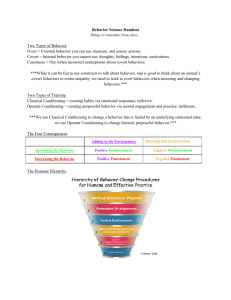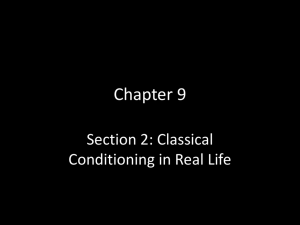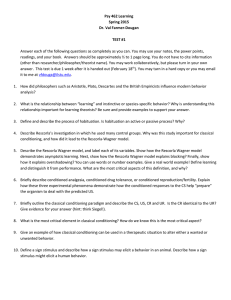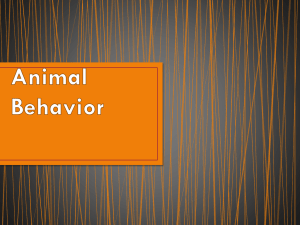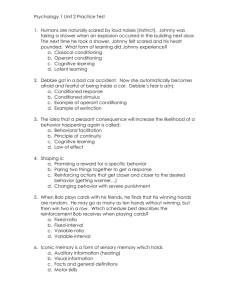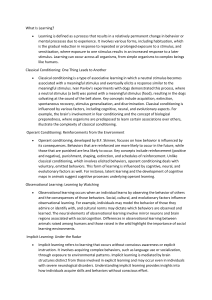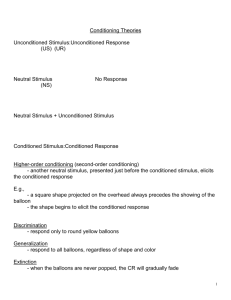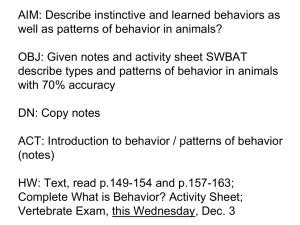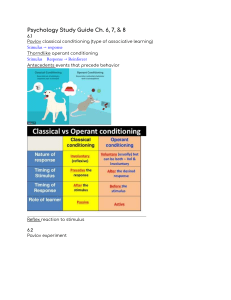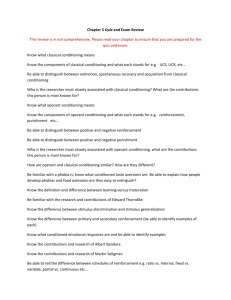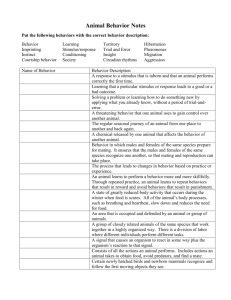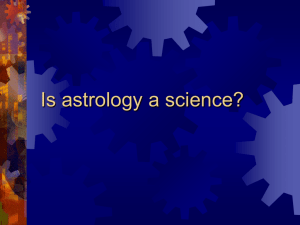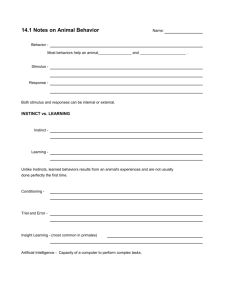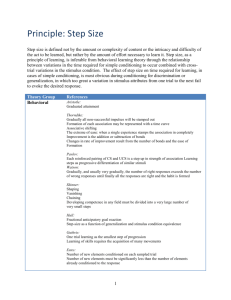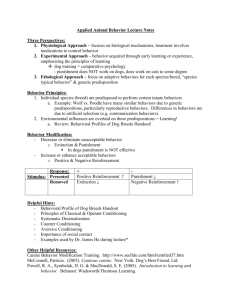Chapter 5 – Comparing Classical and Operant Conditioning
advertisement
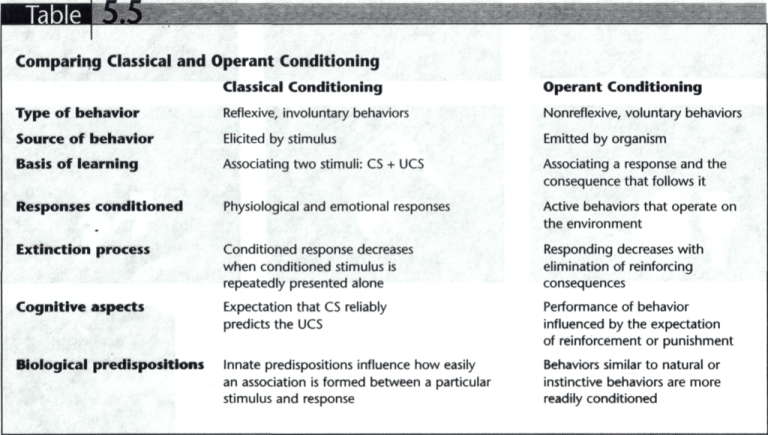
Comparing Classical and Operant Conditioning Classical Conditioning Operant Conditioning Type of behavior Reflexive, involuntary behaviors Nonreflexive, voluntary behaviors Source of behavior Elicited by stimulus Emitted by organism Basis of learning Associating two stimuli: CS + DCS Associating a response and the consequence that follows it Responses conditioned Physiological and emotional responses Active behaviors that operate on the environment Extinction process Conditioned response decreases when conditioned stimulus is repeatedly presented alone Responding decreases with elimination of reinforcing consequences Cognitive aspects Expectation that CS reliably predicts the UCS Performance of behavior influenced by the expectation of reinforcement or punishment Biological predispositions Innate predispositions influence how easily an association is formed between a particular stimulus and response Behaviors similar to natural or instinctive behaviors are more readily conditioned

